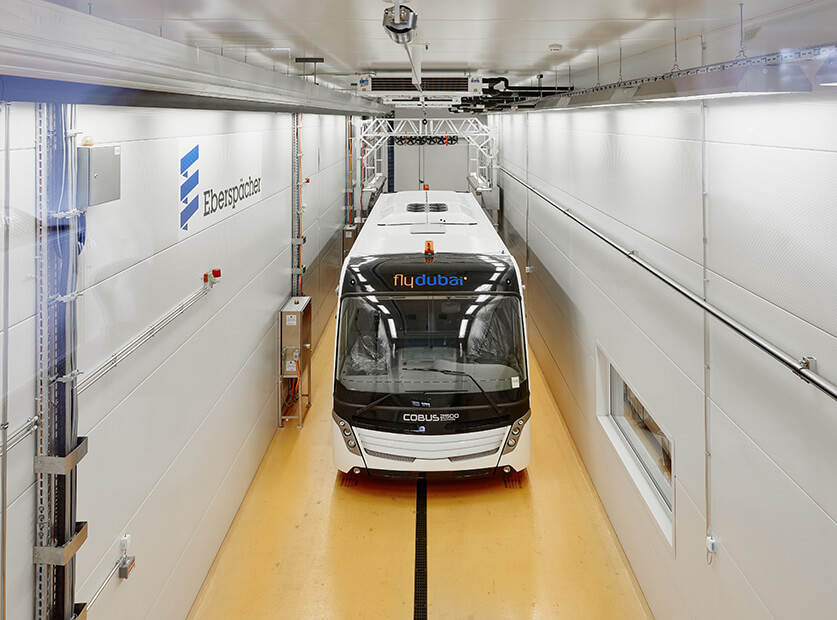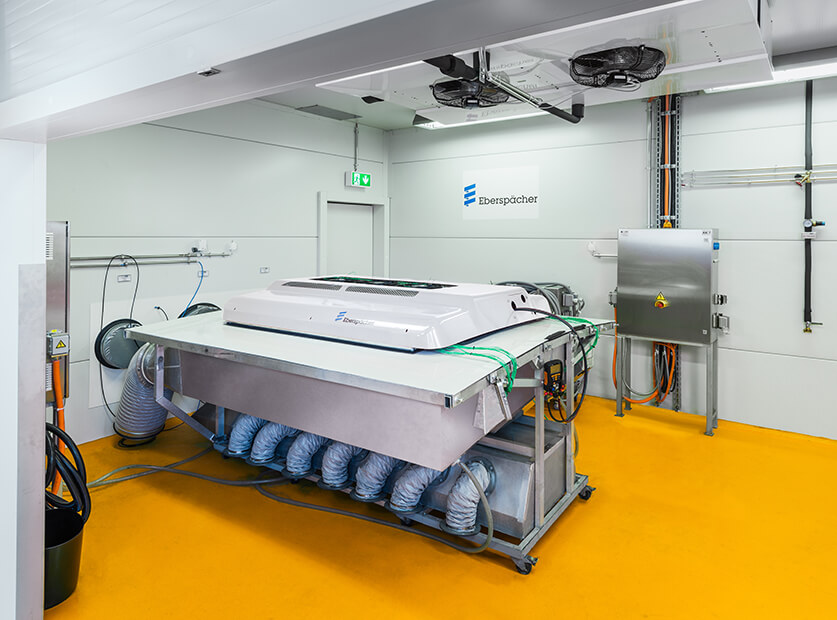Whether -15 °C or + 60 °C, perfect climate is guaranteed
In today's world, air conditioning is a decisive comfort criterion.

Our tests – tougher than reality
Measuring chamber for buses and rooftop-mounted air conditioning systems
Tropical heat or severe cold: As a thermo-management specialist for buses, we know that climate control in vehicles is a crucial comfort criterion nowadays. That is why we operate a measuring chamber for buses and two system measuring chambers at our research and development site in Renningen. We conduct various thermo-dynamic and physical tests to ensure that our systems and new developments are optimally designed for various environmental conditions. We also carry out measurements on behalf of customers.
Measuring chambers for buses
The 23-meter-long measuring chamber is designed for all types of buses—from city buses and coaches to articulated buses, school buses and airport buses. We carry out cooling tests with and without passenger simulation at simulated ambient temperatures of 1560 °C to 60 °C. By means of a measuring run under real conditions, we determine the heating capacity.
The system’s capacity ranges from cooling measurement at different ambient temperatures with and without passenger simulation, a heating test during test runs, a rainwater test for leak testing, measurement of the air speed distribution in the passenger cabin to noise or air volume measurement and testing of the temperature distribution at outlet nozzles and in the passenger cabin.
Measuring chambers for roof-mounted air conditioning systems
The two measuring chambers facilitate testing of conventional rooftop air conditioning systems as well as heat pump systems. At an ambient temperature that can be simulated to -15 °C - 60 °C, we perform tests for systems operated with an electronic or mechanical compressor.
The range of tests extends from determining the refrigeration/heating capacity of the system, determining the efficiency, optimizing the charge at maximum load, to checking the operation of the expansion valve in a worst-case scenario.


